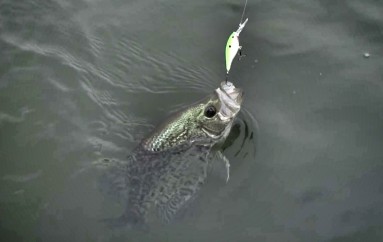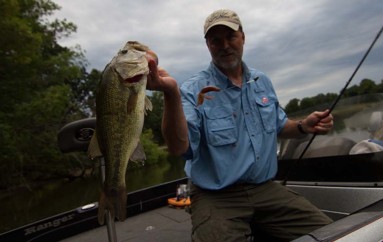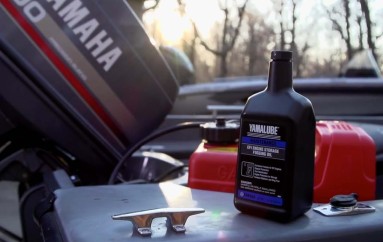
11 Tips For Sight Fishing
As far as excitement goes, it’s hard to beat sight fishing the shallows for cruising bass or schools of fish. Spotting that distinctive black shadow of a fish on the bottom in clear water adds a whole new level of fishing technique and excitement. Knowing a few go-to tips when you find yourself in a situation where sight fishing would be advantageous can make the difference between hammering them, or going home empty handed. These 11 tips for sight fishing cover everything from bait presentation and size to wind and water clarity.
Keep Your Distance
Be prepared to make longer casts with high accuracy. The goal here is you want to stay as far away from the fish as possible while still having the ability to make an accurate cast to the fish. It’s a fine line to dance but you’ll have to learn the steps.
Be prepared to make longer casts with high accuracy. The goal here is you want to stay as far away from the fish as possible while still having the ability to make an accurate cast to the fish. It’s a fine line to dance but you’ll have to learn the steps.
Do Your Research
Using electronics and your naked eye to spot fish in the shallows, marking them, and coming back to fish them works very well for the spring spawn. Knowing exactly where the fish are allows you to sneak into a bed without disturbing the fish. Key here is to spot fish at a distance, whether through your electronics or a great pair of polarized glasses.
Using electronics and your naked eye to spot fish in the shallows, marking them, and coming back to fish them works very well for the spring spawn. Knowing exactly where the fish are allows you to sneak into a bed without disturbing the fish. Key here is to spot fish at a distance, whether through your electronics or a great pair of polarized glasses.
Wear The Right Sunglasses
This goes without saying but a high-end pair of polarized sunglasses are a must when sight fishing. Cutting down on surface glare is paramount to seeing fish; particularly at a distance. Using a billed hat or shading the top of your glasses will also add visibility.
Water Temperature Is Key
Know the water temperature when you are spring sight fishing. Depending on your target species, lower or higher water temperatures are ideal for fish coming shallow and preparing to spawn. Plan ahead and when the water hits the magic number, take off work, call in sick, use vacation whatever you have to do, get to the lake.
Fish Slow. Dead Slow.
If you fish a jig or a plastic to quickly and take it out of the line of sight of the fish, reintroduce it, take it out, repeat over and over, eventually the fish will realize that there is no need to be aggressive toward it because it is just going to leave. The better technique is to actually leave it right in front of the fish and slowly twitch it. This is particularly true of spawning fish. A fish on a bed is not actively feeding. Inducing a strike is tricky but slow-working a plastic can be enough to drive them to pick it up.
What You Wear Matters
Avoid wearing bright colors. Basically if you would be easy to pick out in a crowd, fish can easily spot you as well. Stick to neutral colors.
Fluorocarbon Line Is Your Best Friend
Fluorocarbon has excellent abrasion resistance and virtually disappears underwater. Both of these make it THE choice for sight fishing.
Water Clarity
Crystal clear water is great for seeing fish at a long distance. The problem is they can also see you. The stars have to align for a perfect situation here but basically you want clear, but slightly stained water. Something where you can see the shadow of a fish, a dark spot on the bottom but have enough water stain where they can’t easily pick you out in a boat. You will be able to get much closer to the fish without spooking them and allow you to place your bait
The Ripple Effect
Ideally, you want a light wind to slightly ripple the water surface. This is a double edged sword: A slight ripple means fish will have a much harder time picking you out because of the water refraction but it also means it will be a little more difficult to spot fish. A slight surface ripple is great for ultra-clear water where even with broken surface you can still pick out fish. Plus, super clear water makes it difficult to get in range of weary fish, making light winds a benefit not a deterrent to sight fishing.
Size Matters
Pick the correct bait size. If you are fishing plastics, tubes, small worms (3“-5”), and jigs should be the go-to. Using a circle hook and rigging it wacky style works very well. You get tons of action out of the bait and the circle hook is much safer for spawning fish because they are less likely to swallow the hook.
Let The Fish Find The Bait
Depending on the situation this rule can change. If you are fishing bass on beds, you want the bait right on the edge of the bed but if you are sight fishing in shallows where fish are cruising, you want the fish to find the bait. This is done by casting where the fish is going to be, not where they are. Lead the fish and intercept them. The bait will spend more time in the line of sight of the fish and you will spook far less fish by not casting on top of them.
This goes without saying but a high-end pair of polarized sunglasses are a must when sight fishing. Cutting down on surface glare is paramount to seeing fish; particularly at a distance. Using a billed hat or shading the top of your glasses will also add visibility.
Know the water temperature when you are spring sight fishing. Depending on your target species, lower or higher water temperatures are ideal for fish coming shallow and preparing to spawn. Plan ahead and when the water hits the magic number, take off work, call in sick, use vacation whatever you have to do, get to the lake.
If you fish a jig or a plastic to quickly and take it out of the line of sight of the fish, reintroduce it, take it out, repeat over and over, eventually the fish will realize that there is no need to be aggressive toward it because it is just going to leave. The better technique is to actually leave it right in front of the fish and slowly twitch it. This is particularly true of spawning fish. A fish on a bed is not actively feeding. Inducing a strike is tricky but slow-working a plastic can be enough to drive them to pick it up.
Avoid wearing bright colors. Basically if you would be easy to pick out in a crowd, fish can easily spot you as well. Stick to neutral colors.
Fluorocarbon has excellent abrasion resistance and virtually disappears underwater. Both of these make it THE choice for sight fishing.
Crystal clear water is great for seeing fish at a long distance. The problem is they can also see you. The stars have to align for a perfect situation here but basically you want clear, but slightly stained water. Something where you can see the shadow of a fish, a dark spot on the bottom but have enough water stain where they can’t easily pick you out in a boat. You will be able to get much closer to the fish without spooking them and allow you to place your bait
Ideally, you want a light wind to slightly ripple the water surface. This is a double edged sword: A slight ripple means fish will have a much harder time picking you out because of the water refraction but it also means it will be a little more difficult to spot fish. A slight surface ripple is great for ultra-clear water where even with broken surface you can still pick out fish. Plus, super clear water makes it difficult to get in range of weary fish, making light winds a benefit not a deterrent to sight fishing.
Pick the correct bait size. If you are fishing plastics, tubes, small worms (3“-5”), and jigs should be the go-to. Using a circle hook and rigging it wacky style works very well. You get tons of action out of the bait and the circle hook is much safer for spawning fish because they are less likely to swallow the hook.
Depending on the situation this rule can change. If you are fishing bass on beds, you want the bait right on the edge of the bed but if you are sight fishing in shallows where fish are cruising, you want the fish to find the bait. This is done by casting where the fish is going to be, not where they are. Lead the fish and intercept them. The bait will spend more time in the line of sight of the fish and you will spook far less fish by not casting on top of them.




